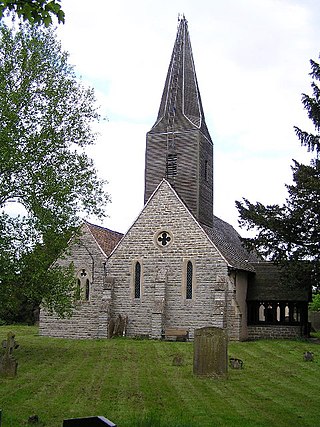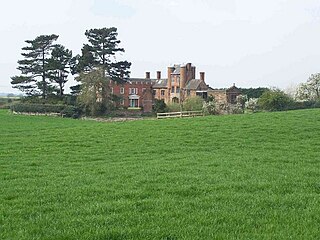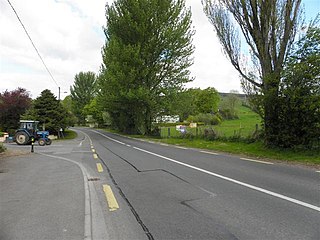Related Research Articles

The Commonwealth was the political structure during the period from 1649 to 1660 when England and Wales, later along with Ireland and Scotland, were governed as a republic after the end of the Second English Civil War and the trial and execution of Charles I. The republic's existence was declared through "An Act declaring England to be a Commonwealth", adopted by the Rump Parliament on 19 May 1649. Power in the early Commonwealth was vested primarily in the Parliament and a Council of State. During the period, fighting continued, particularly in Ireland and Scotland, between the parliamentary forces and those opposed to them, in the Cromwellian conquest of Ireland and the Anglo-Scottish war of 1650–1652.

The English Civil War refers to a series of civil wars and political machinations between Royalists and Parliamentarians in the Kingdom of England from 1642 to 1651. Part of the wider 1639 to 1653 Wars of the Three Kingdoms, the struggle consisted of the First English Civil War, the Second English Civil War and the Third English Civil War. The latter is also known as the Anglo-Scottish war, since most of the fighting took place in Scotland.

The Cromwellian conquest of Ireland or Cromwellian war in Ireland (1649–1653) was the re-conquest of Ireland by the forces of the English Parliament, led by Oliver Cromwell, during the Wars of the Three Kingdoms. Cromwell invaded Ireland with the New Model Army on behalf of England's Rump Parliament in August 1649.

The Treaty of Breda (1650) was signed on 1 May 1650 between Charles II, exiled king of England, Scotland and Ireland, and the Scottish Covenanter government. Under its terms, they agreed to install Charles II as King of Scotland and Britain, while Charles undertook to establish a Presbyterian Church of England, and guarantee the rights of the Church of Scotland.

White Ladies Aston is a village in the Wychavon local government district of Worcestershire, England, United Kingdom, and also lends its name to the civil parish in which the village is located. The village is located to the east of the A44 which started as a Saltway linking Droitwich to Oxford. To the south is Pershore and five miles west is Worcester. The parish is bound to the east by the Bow Brook. The parish, according to the 2011 census, has 87 households with 220 residents.

The Down Survey was a cadastral survey of Ireland, carried out by English scientist, William Petty, in 1655 and 1656. It was created to provide for precise re-allocation of land confiscated from the Irish.
Thomas Cromwell established the Court of Augmentations, also called Augmentation Court or simply The Augmentation in 1536, during the reign of King Henry VIII of England. It operated alongside three lesser courts following the dissolution of the monasteries. The Court's primary function was to gain better control over the land and finances formerly held by the Roman Catholic Church in the Kingdom of England. The Court of Augmentations was incorporated into the Exchequer in 1554 as the Augmentation Office.

Sir Edward Littleton, 1st Baronet was a 17th-century English Baronet and politician from the extended Littleton/Lyttelton family, the first of a line of four Littleton baronets with Pillaton Hall as their seat. He initially joined the Parliamentarians during the English Civil War. Having tried unsuccessfully to find a third way, he switched his support to the Royalist cause – a decision that led to his financial ruin, as large debts made it impossible to redeem his estates from sequestration after the victory of Parliament.

William Levett, Esq., was a long serving courtier to King Charles I of England. Levett accompanied the King during his flight from Parliamentary forces, including his escape from Hampton Court palace, and eventually to his imprisonment in Carisbrooke Castle on the Isle of Wight, and finally to the scaffold on which he was executed. Following the King's death, Levett wrote a letter claiming that he had witnessed the King writing the so-called Eikon Basilike during his imprisonment, an allegation that produced a flurry of new claims about the disputed manuscript and flamed a growing movement to rehabilitate the image of the executed monarch.

The Stuart period of British history lasted from 1603 to 1714 during the dynasty of the House of Stuart. The period ended with the death of Queen Anne and the accession of King George I from the German House of Hanover.

The Restoration of the monarchy began in 1660. The Commonwealth of England, Scotland and Ireland (1649–1660) resulted from the Wars of the Three Kingdoms but collapsed in 1659. Politicians such as General Monck tried to ensure a peaceful transition of government from the "Commonwealth" republic back to monarchy. From 1 May 1660 the English, Scottish and Irish monarchies were all restored under King Charles II. The term Restoration may apply both to the actual event by which the monarchy was restored, and to the period immediately before and after the event.

Ballymcgovern is a village and townland in County Cavan, Ireland. It lies on the border with County Leitrim, within the parish of Templeport and barony of Tullyhaw on the Ballinamore to Ballyconnell road, the regional R205 road (Ireland).
William Eyre, was an English Parliamentary army officer in the English Civil War and a Leveller.

Derryginny is a townland in the Parish of Tomregan, Barony of Tullyhaw, County Cavan, Ireland.
Walter Blith (1605–1654) was an English writer on husbandry and an official under the Commonwealth. His books promoted improvements in techniques, but were suppressed after the 1660 Restoration.
Eric James Bodington was an eminent Anglican priest and author in the early decades of the twentieth century.
Wimbledon manor house; the residence of the lord of the manor, was an English country house at Wimbledon, Surrey, now part of Greater London. The manor house was over the centuries exploded, burnt and several times demolished. The first known manor house, The Old Rectory was built around 1500 still stands as a private home, despite very nearly falling into a state beyond repair, in the 19th century. The ambitious later Elizabethan prodigy house, Wimbledon Palace, was "a house of the first importance" according to Sir John Summerson, and is now demolished.
This is a timeline of events leading up to, culminating in, and resulting from the Wars of the Three Kingdoms.

Gowran Castle is located in the centre of Gowran, County Kilkenny, Ireland. The castle is a manor house and was fully restored between 2013 and 2014.
References
- ↑ Bodington, E. J. (1919). "The church survey in Wiltshire, 1649-50 (part 1)". Wiltshire Archaeological & Natural History Magazine. XL (CXXIX): 253–72.
- ↑ Bodington, E. J. (1920). "The church survey in Wiltshire, 1649-50 (parts 2 and 3)". Wiltshire Archaeological & Natural History Magazine. XLI (CXXXII and CXXXIII): 1–39, 105–24.
- ↑ Willan, T. S. "The Parliamentary Surveys for the North Riding of Yorkshire". Yorkshire Archaeological Journal. XXXI (Part 123): 224–289.
- ↑ Cave; Pounds, N.J.G., eds. (1982). The Parliamentary Survey of the Duchy of Cornwall Pts 1 & 2. Torquay: The Devon & Cornwall Record Society. ISBN 978-0-901853-27-1.
- ↑ Cave, T.; Wilson, R. A. (1924). The Parliamentary Survey of Lands & Possessions of the Dean and Chapter of Worcester. Worcester Historical Society. OCLC 813708754.
- ↑ Gentles, I. (July 1980). "The sale of bishops' lands in the English Revolution, 1646 - 1660". English Historical Review. XCV (CCCLXXVI): 573–596. doi:10.1093/ehr/XCV.CCCLXXVI.573.
- ↑ Thirsk, J. (December 1954). "The Restoration land settlement". Journal of Modern History. XXVI (4): 315–328. doi:10.1086/237733. JSTOR 1876109. S2CID 144362391.
- ↑ Gentles, I. (1973). "The sales of crown lands during the English Revolution". The Economic History Review. XXVI (4): 614–635. doi:10.1111/j.1468-0289.1973.tb01957.x. JSTOR 2593701.